Summer is coming and it can be a mad rush, now that we can finally plant out frost tender plants. It may also be a question of finding space for them all!
Of earlier plantings, my greatest success this spring is Boltardy beetroot, multisown late February and planted a month later. It has lived under fleece throughout, just kept pushing it up.
A word about the forum, I am so sorry about the cyber attack. It has been difficult to sort out and my web team have been on it for a few days.

12th May before removing fleece, with the weather warming: this cover is 25gsm and three years old

The beetroots are four per cliump and swelling nicely, first harvest very soon

Basil sown 39 days ago in modules, potted on, now planting under cover

After clearing purple sprouting broccoli, we sowed peas for shoots as a catch crop before lettuce. The white is soil fungi, I see a lot here.
Open day
This Sunday, May 19th, from 1-5pm. There is plenty to see!
Steph and I shall be here until just before 5pm (selling books including hers), then we need to leave in order to travel to Cork that evening, for my day course at Ballymaloe on 20th.
I return to Ireland for a day course at Glebe Gardens on 25th.
Then on 29th I give a no dig course in the beautiful gardens of Marbury Hall, NW England.
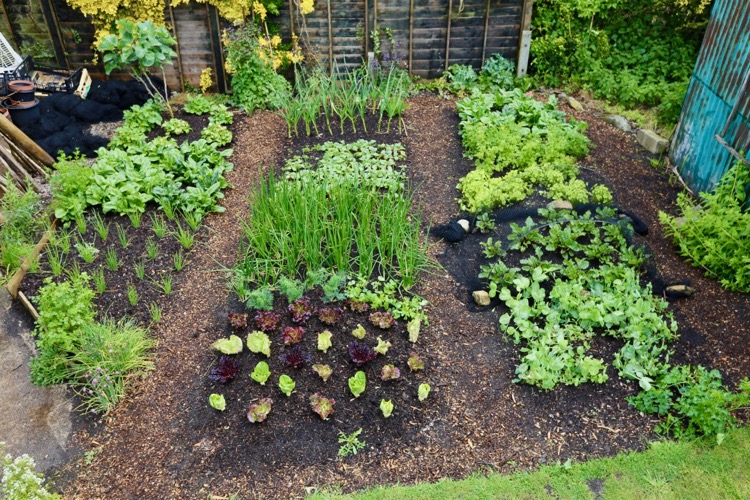
Small garden mid May, still winter salads on far right, overwintered spinach & spring onions

View SE corner May 11th with many covers still on, against carrot root cly and over new celeriac
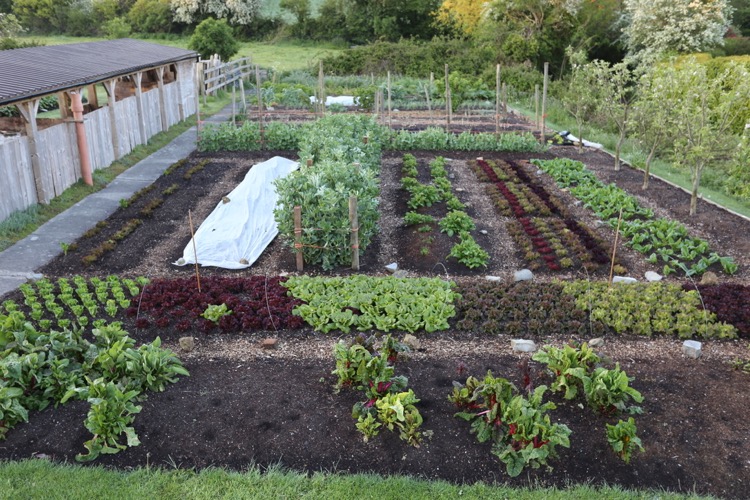
View West side May 13th and new planting of Kuri squash is under the fleece, beans 5th year consecutive same beds
Plant frost sensitive veg, without hardening off
I find it works to take plants from the greenhouse and pop into open ground, then cover with fleece for a week or so, unless the weather is hot. Our temperatures are 16-18C/low sixties F in the afternoon and 4—8C low forties overnight.
If you suspect a late frost, hoops to keep fleece off plant leaves will prevent damage where they otherwise are touching.
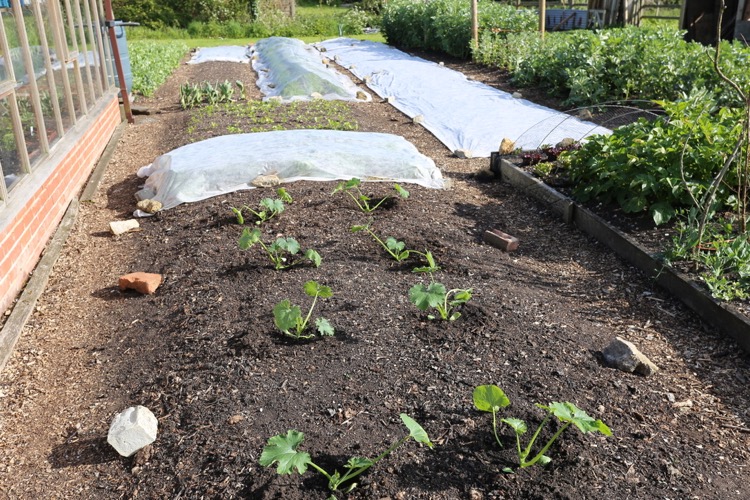
Courgettes just planted 13th May, sown 15th April
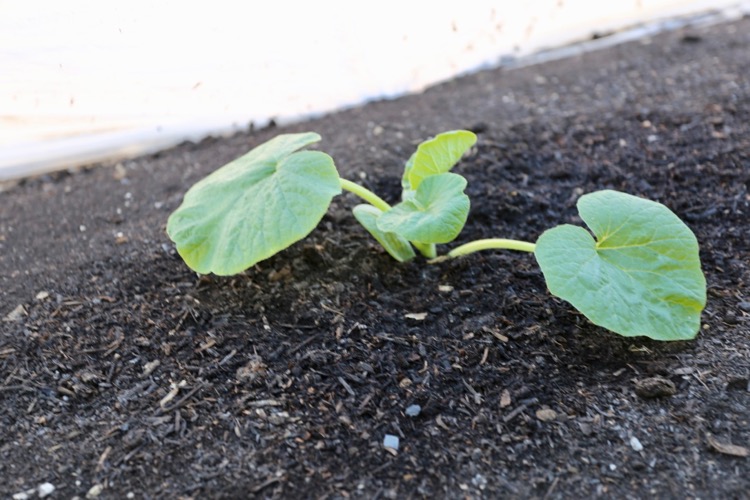
Kuri squash, fleece mostly protects from wind

Soybeans and the hoop means safety if a frost
Sow
Beans and brassicas, courgette, French and climbing beans, leaf beet, beetroot, chard, lettuce, winter brassicas, salad onion. Plus leeks and winter squash by early May and swede at end May or early June.
I recently sowed Brussels sprouts, cabbage for autumn and climbing beans.

Seedtray sowing to prick out soon, autumn brassicas and zinnias too
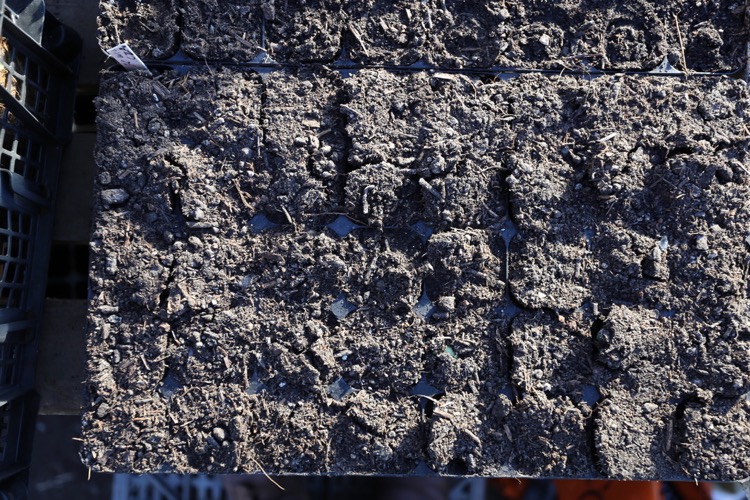
Each module has one homesaved seed of Czar runner beans, five days on the windowsill now in greenhouse
No dig podcasts
Podcast about no dig, when Sarah Wilson interviewed me recently. Her channel has a refreshing and unconventional take on gardening.
This is my interview with no till farmer Jesse Frost. He broadcasts monthly, and says this broke all his records for listener numbers.
Weedkiller in hay
Many of us are aware of aminopyralid and the risks associated with using horse manure in particular, but I have still been caught out by damage from just a small amount in one batch of Homeacres compost. Perhaps the stables bought one load of hay from a field where this horrible stuff had been used. Last summer we used dry straw from the neighbour's manure heap, as bedding for the urine side of my compost loo, then after a month we add this to the current compost heap. (I had been unable to buy small bales of straw after last year's drought),
If you mulched with this hay, you would suffer the same problems of stunted growth and curling new leaves. Most at risk are legumes and solanums, hence my trials in the photos. I am having to put the affected compost on spare ground, to allow breakdown of the weedkiller by soil microbes.

The broad beans closest to camera are planted in ground mulched with compost containing aminopyralid in only small quantitiy, further beans were also planted earlier

Sungold tomatoes in left mushroom compost, right the affected compost made last summer
c

Legume trial 8 rows sown in modules, 2 each of compost from September, October, November, and mushroom
Under cover mulching and planting
We have cleared the winter vegetables and spread the annual dose of compost. I wanted to use my own and could not, was helped by Woodhort of Sharpham, who delivered some old cow manure. I checked its temperature and it was 64C/147F, so not as old as the six months claimed, but I had no choice. Growth may be less brilliant!

Mulching in progress, on the paths is old green waste compost, mushroom on beds’ surface

Cucumbers planted 13th May with French beans and marigold

From the other end, where garlic lived happily between lettuce, harvest is 12th June

New plantings and more plants ready, beds had their annual mulch
New polytunnel
Steph mentioned to First Tunnels that I was tempted to change models, in order to have straight sides. They offered to provide and erect a new one, next week. We have a day on Weds 22nd to take down the current tunnel, with help from the community project who are receiving it, Then I shall fleece new plantings until the new tunnel is erected.

The new tunnel is 10ft or 3m longer, so we mulched the ground for planting very soon

The right hand side has cardboard. Whole area had 2in soil as I had spare, then 5in compost.
Events elsewhere
At Grizedale in the Lake District, June 30th.
“Lawson Park is a historic Lake District hill farm which has been HQ to Grizedale Arts since 2009. Head Gardener Karen Guthrie & colleagues are opening the house & garden to the public on Sunday June 30, with proceeds going to the Stroke Association. The extensive gardens have unforgettable views to the fells and Coniston Water, and include 2 large no-dig polytunnels and a terraced ‘Paddy Field’ where no-dig vegetable growing has been practiced for the last three years.
There is a new farming exhibition of photos in Nailsworth, Glos: agrarian renaissance by Walter Lewis.
Keep pulling marestail
You just need to keep pulling new shoots of marestail, as often as you can, to deprive the roots of new sustenance. Gradually they weaken.
Also keep paths clear, and mulch or mow edge areas, to slow any spread in from the sides.
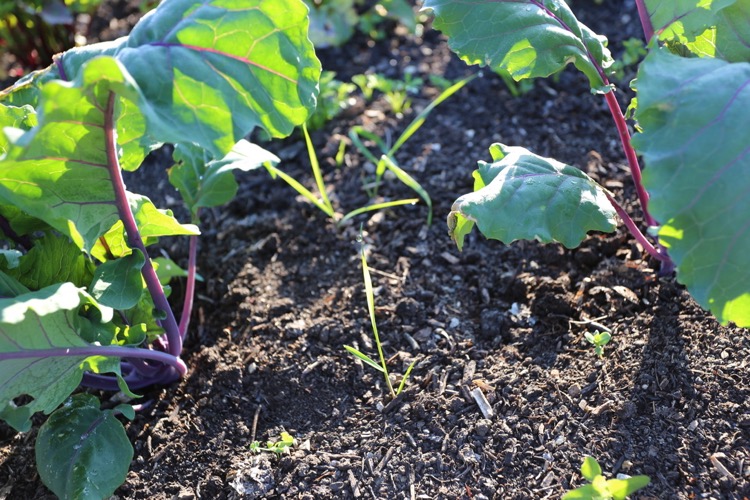
Ants
Ants are difficult but they don’t like moisture, or spiciness!
Keep soil moist, try during say 1 litre of water per nest, and the water has chilli extract, for example boil a few chillies just for 5 minutes. It was effective in my greenhouse but some have come back, a year later.












































0 comments